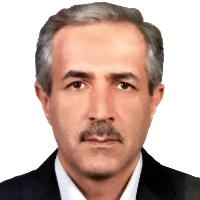Determination of new soil hydromorphic index (SHI) using micromorphological data for aquic soils in the north of Iran
Microscopic techniques provide invaluable information about soil genesis and also physicochemical and morphological properties of undisturbed natural soil structure. Determination of micromorphological indices is an advanced method of quantifying soil properties and increasing the accuracy of morphological and micromorphological studies. At present, there are no quantitative criteria in the American soil classification system to determine the classification of soils with an aquic moisture regime or with aquic conditions; so that there is no distinction between saturated soils and their reduction due to high groundwater and soils which saturation and reduction due to water infiltration from the soil surface is temporarily saturated only in the upper horizons. To prevent this problem, the general purpose of this research is to use micromorphology and image analysis in order to manage soil resources through the correct identification of soils with aquic conditions. In addition to the specific purpose, a new hydromorphic index (SHI) for soil evolution in aquic conditions based on micromorphological features was proposed.
To do this research and determine the micromorphological index of soil hydromorphic properties, after preparing intact samples from different horizons of the studied profiles (six control pedons with aquic conditions from northern Iran), their thin sections were prepared. In the following, thin sections were prepared and analyzed using a polarizing microscope. To determine the soil hydromorphic index (SHI) for aquic soils the following steps were then performed in the following order: 1-Preparation of thin sections, 2-Study of the micromorphological properties, 3-Preparation of necessary images, 4- Image analysis and quantification of micromorphological parameters, 5- Score attributes between 0 and 100 points and 6-Calculation of soil hydromorphic index (SHI).
The obtained hydromorphic index was correlated with microstructure, fine soil materials, birefringence fabric, organic materials, hydromorphic features and mineral alteration. This index can be useful for correlation of soils with aquic horizons formed on different landscape units. The results showed that the hydromorphic index varied from very high values in paddy soils under aquic moisture regime to very low values in non-paddy soils under kiwifruit cultivation. In paddy soils under aquic moisture regime, SHI values increased with soil depth and its maximum was seen in deeper horizons, whereas in non-paddy soils, the relationship between SHI and soil depth was unclear.
The defined hydromorphic index in soils under aquic moisture regime was more than 0.35 and in the soil taxonomy keys were in the aquic soils class. In contrast, soils with a hydromorphic index of less than 0.35 are found in soils that have only aquic conditions. Finally, many of the problems that exist in the American Soil Classification System in distinguishing soils with aquic moisture regime from soils with aquic conditions can be solved by determining the hydromorphic index.
-
Investigating the effects of some selected organic, inorganic materials and plant growth promoting bacteria in modifying the physical and chemical properties of a sandy Entisol
Seyed Mohammad Hoseini Badashiani, *, , Hassan Etesami, Mohammadreza Bihamta
Iranian Journal of Soil and Water Research, -
Modification of some physical and chemical properties of low productivity sandy soils using bentonite and nano-bentonite
Hadis Khosravian Chatroodi, *, , Sara Talaee Khosrowshahi, Khodabakhsh Goodarzvand Chegini, Mostafa Abdollahpour, Hamidreza Mokhtari Esfidvajani
Iranian Journal of Soil and Water Research,



